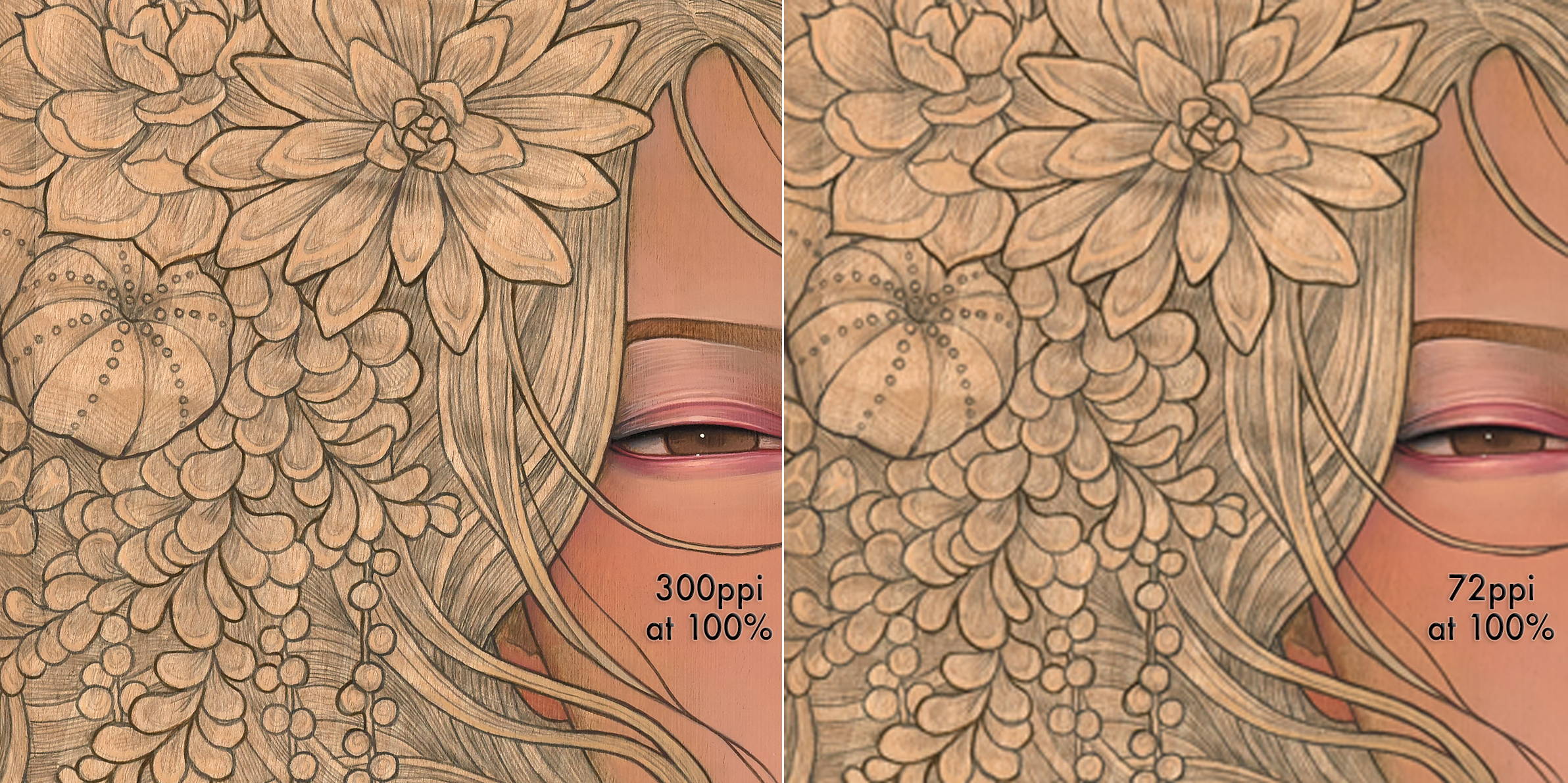Size matters. Resolution and PPI/DPI.
Pixels are the unit of measure for digital images and dots are the measure of printed images. The general consensus is that in printed form, 300 DPI (dots per inch) looks crisp to the human eye. If you print at a higher resolution, the eye cannot discern the difference without extra scrutiny and maybe a magnifying glass.
Since a pixel is digital it can be made to any dimensions - 300 PPI (pixels per inch) is a good equalization point to make a pixel a standard number. The internet is made up of 72 PPI for smaller file size and faster loading. If your file is higher resolution than 300 PPI, that means you can print it larger. For example if you have an 8x10 at 300 PPI your image would be 2400x3000 pixels but if it is 600 PPI then you have 4800x6000 pixels so you could print it up to 16x20.

Once an image has been shrunk (reduced the number of pixels) you do not recover the lost pixels by making it bigger again — the pixels would be redrawn at the new size if changed. Historically you couldn’t recreate pixels where they didn’t exist. Now there are AI programs like Topaz that can add pixels but they do not perfectly mimic the human hand. If you are trying to accurately capture an artist’s original work it is best to always work with the largest file possible (up to 300 PPI at the final print size).
You can put your pixel dimensions into the calculator to see how many inches it can be printed at 300 PPI. If you would like to print larger you can lower your resolution in the dropdown to print fewer pixels per inch which increases the number of inches the pixels measure.
Viewing distance and the overall size of the print are other points of consideration when discussing what resolution images should be printed at. Once you extend beyond arm's length, you can start lowering the dots per inch. Billboards and wall murals are typically very low resolution. If your file is lower resolution but you want to print it big, you may want to consider a more textured paper like canvas or watercolor/cold press to hide distortion.
